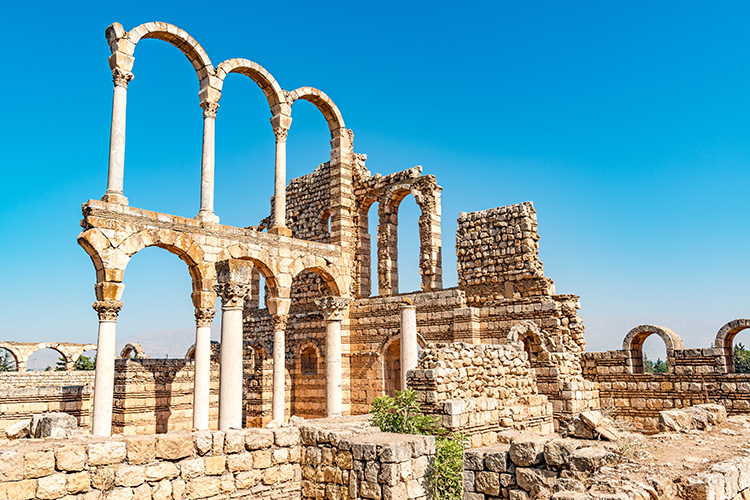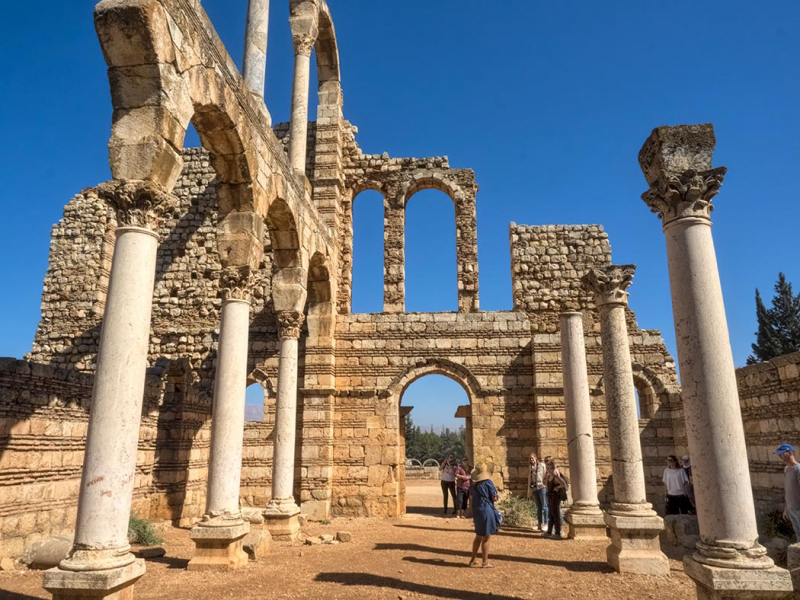Anjar
Anjar was the capital of the Umayyad Islamic dynasty in Lebanon, founded by Caliph Walid I in the early eighth century. Anjar's location at the crossroads of key trade routes helped it to grow into a commercial center throughout the course of this century.
Anjar was destroyed and abandoned following a defeat in the eighth century. Nonetheless, it is Anjar's brief history that makes it such a significant place. Every detail of what is left – the meticulously planned layout, the massive arches and colonnades of the palaces that previously stood there – can be traced back to the Umayyad period.
Anjar, founded by Caliph Walid Ibn Abd Al-Malak, was a bustling trading center at the crossroads of two significant trade routes: one connecting Beirut and Damascus, and the other crossing the Bekaa and connecting Homs and Tiberias.
Anjar's prosperity, however, came to an end in 744 AD when Walid's son, Caliph Ibrahim, was defeated, and the city was demolished and abandoned, leaving only the shadow of an 8th-century city to be discovered centuries later.
Only in the 1940s were the ruins of Anjar discovered, exhibiting defensive city walls peppered with 40 towers around a rigid urban design. The remains comprised monuments and freestanding arched columns that were once part of the three-leveled Umayyad palace.
Anjar is now a UNESCO World Heritage Site for its outstanding example of Umayyad architecture, and it is open to the public. Anjar is a place worth spending a few hours strolling around, reading the educational signs that guide you through the city's history along the main streets that separate the residential section from the palace and 'hamams' baths.
Location: Kachchh district, Lebanon







